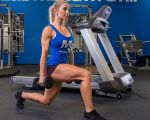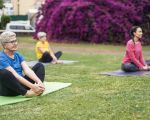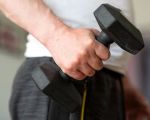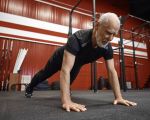- 1-Importance-Of-Stretching-For-Athletes
- 2-Stretching-Benefits-For-Runners
- 3-Key-Stretches-For-Runners
- 4-Stretching-Benefits-For-Lifters
- 5-Essential-Stretches-For-Lifters
- 6-Tips-For-Effective-Stretching
- 7-Integrating-Stretching-Into-Your-Routine
1. Importance of Stretching for Athletes: Runners and Lifters Alike
Stretching is a critical component of any training program, especially for runners and lifters. It increases flexibility, improves blood flow to muscles, and prepares the body for physical exertion. Proper stretching reduces muscle stiffness, enhances range of motion, and lowers the risk of injury, which are vital for peak athletic performance.
Ignoring stretching can lead to tight muscles, imbalances, and overuse injuries. Whether you are pounding the pavement or lifting heavy weights, adopting a stretching routine tailored to your activity can elevate your results and support long-term joint health.
2. Stretching Benefits for Runners: Improving Endurance and Recovery
For runners, stretching helps maintain muscle elasticity, which is essential for efficient strides and injury prevention. Dynamic stretches before running warm up the muscles, increasing heart rate and preparing the body for the workout. Post-run static stretches assist in muscle recovery by lengthening tightened tissues and reducing soreness.
Runners often target areas like hamstrings, calves, quadriceps, and hip flexors. Stretching these muscles improves running form and can alleviate common running injuries such as shin splints and IT band syndrome. Case studies reveal that runners who consistently stretch report fewer injuries and faster recovery times.
3. Key Stretches for Runners: Effective Techniques
Essential stretches for runners include the standing quad stretch, calf stretch against a wall, seated hamstring stretch, and hip flexor stretch. Each stretch targets muscle groups heavily used during running. For example, the hip flexor stretch helps counteract the effects of prolonged sitting and tight hips, common issues in runners.
Performing dynamic stretches like leg swings and walking lunges before running enhances muscle activation. After your run, hold static stretches for at least 20-30 seconds to improve flexibility. Combining these techniques optimizes performance and keeps muscles healthy.
4. Stretching Benefits for Lifters: Enhancing Strength and Mobility
Weightlifters benefit from stretching by increasing joint mobility and muscle flexibility, allowing for safer and more effective lifts. Stretching reduces muscle tension and helps lifters achieve better form, which is crucial to avoid strains and sprains.
Improved flexibility contributes to greater lifting range, enabling more complete muscle engagement. Many experienced lifters credit consistent stretching for breakthroughs in their strength plateaus and injury prevention.
5. Essential Stretches for Lifters: Targeting Key Muscle Groups
Important stretches for lifters focus on shoulders, chest, hamstrings, and lower back. Shoulder dislocates with a resistance band improve overhead mobility, while chest stretches counteract tightness from pressing movements. Hamstring and lower back stretches maintain posterior chain health, critical for deadlifts and squats.
Incorporating foam rolling and myofascial release alongside stretching further enhances muscle recovery and flexibility. Lifters who adopt these practices report fewer injuries and improved performance longevity.
6. Tips for Effective Stretching: Maximizing Benefits Safely
To get the most from your stretching routine, avoid bouncing movements that can cause injury. Instead, hold stretches steadily and breathe deeply to relax muscles. Warm muscles stretch more easily, so perform light aerobic activity before static stretches.
Consistency is key. Regular stretching, even on rest days, supports long-term flexibility and mobility. Listening to your body and avoiding overstretching prevents strain and discomfort, making your stretching practice sustainable.
7. Integrating Stretching Into Your Routine: Combining Running and Lifting
Balancing stretching for both runners and lifters involves focusing on overlapping muscle groups and scheduling sessions appropriately. For example, a dynamic warm-up before a run and a targeted post-workout stretch after lifting can coexist without conflict.
Many athletes find success by creating a stretching schedule that complements their training goals. Online resources and professional guidance from sites like Fitness provide tailored programs and product recommendations to support this integration.
One athlete shared how implementing a combined stretching routine reduced her knee pain and boosted performance across both disciplines, illustrating the power of well-structured stretching guides.








